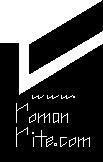USCCB was Misleading
[Update 15 January 2005. The concerns expresed below about the Holy Hours web page have now been corrected. It is encouraging that the United States Conference of Catholic Bishops have responded in this way to the issues raised. End of update.]
The website of the USCCB is misleading in its presentation of what a liturgical book says.
It gives the false impression that the Divine Praises are part of the liturgical book on benediction, Holy Communion and the Worship of the Eucharist Outside of Mass.
At http://www.usccb.org/liturgy/holyhours.shtml it has:
99. After the prayer, the priest puts on the humeral veil, genuflects, and takes the monstrance. He makes the sign of the cross with the monstrance over those gathered, in silence.
REPOSITION
After the blessing the Blessed Sacramentis removed from the monstrance and brought to the place of reservation. Meanwhile, the priest leads all in the Divine Praises. Each acclamation is repeated by all together.
Blessed be God.
Blessed be His Holy Name. ...
Particularly by using the red text, readers are being given the impression that this is a continuation of the liturgical book. But in the instructions on reposition they depart from it. Here is the actual text, from The Rites, Volume One, published by Liturgical Press, Minnesota in 1990, page 677:
REPOSITION
100. After the blessing the priest or deacon who gave the blessing, or another priest or deacon, replaces the blessed sacrament in the tabernacle and genuflects. Meanwhile the people may sing or say an acclamation, and the minister then leaves.
The Divine Praises are not in the liturgical book. The Liturgy Office of England and Wales have produced a guide that does not include them. It is disappointing that this example has not been followed in the United States.
Update 18 December 2004
A improvement seems to have been made on the page, with the red text now being black.
But it still concerns me that the book's paragraph numbers are being used, but slight changes are made in the text.
| USCCB web page | Liturgical Book |
|
97. Toward the end of the exposition, The priest goes to the kneeler in front of the altar. As he kneels, Tantum ergo is sung and he incenses the Blessed Sacrament. After the hymn is finished, the priest rises and sings or says: |
EUCHARISTIC HYMN AND INCENSATION
97. Toward the end of the exposition the priest or deacon goes to the altar, genuflects, and kneels. Then a hymn or other eucharistic song is sung. Meanwhile the minister, while kneeling, incenses the sacrament if the exposition has taken place with the monstrance. |
|
98. After a brief period of silence, The priest continues: Lord Jesus Christ, |
PRAYER
98. Afterward the minister rises and sings or says: Let us pray. After a brief period of silence, the minister continues: Lord Jesus Christ, All respond: Amen Other prayers, nos. 224-229, may be chosen. |
|
99. After the prayer, the priest puts on the humeral veil, genuflects, and takes the monstrance. He makes the sign of the cross with the monstrance over those gathered, in silence. |
EUCHARISTIC BLESSING
99. After the prayer the priest or deacon puts on the humeral veil, genuflects, and takes the monstrance or ciborium. He makes the sign of the cross over the people with the monstrance or ciborium, in silence. |
Many of the changes are not substantial. But an important one is that the genuflection is removed in 97.
My main concern is that the paragaph numbers mislead people into believing that the liturgical book is being quoted.
By J.R. Lilburne, 17 November, 2004. Updated 18 December 2004 and 15 January 2005. I give what I have written on this page to the public domain.
A guide without the Divine Praises can be found in the Year of the Eucharist Resources at liturgyoffice.org.uk/Resources
